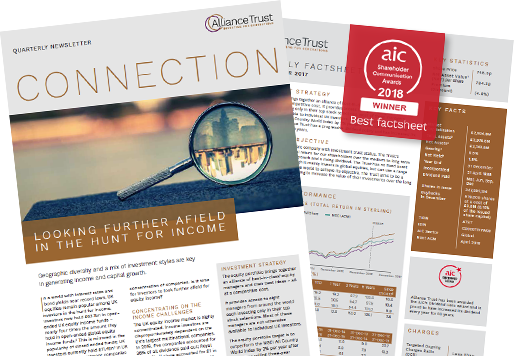Inflation, pronounced dead by economist Roger Bootle 25 years ago, could be coming back to life. It is a topic currently gripping discussion about the future of the economy as lockdown restrictions ease. But what does it all really mean? How might it affect us as savers and investors? How long will it last? We take a look at the burning questions about inflation you may have wanted to ask, and provide the answers to best help you reposition your portfolio and sleep easy at night.
What causes inflation?
To put it simply, inflation is the rate at which the prices of goods and services in an economy are rising. It is expressed as a percentage change in general prices within an economy over time and indicates that the cost of living is increasing as goods and services become more expensive.
There are two general causes of inflation. The first is known as ‘demand-pull’ inflation which arises when demand for goods or services outstrips supply and producers raise their prices. This phenomenon is generated by increased demand. On the other hand, if an economy is in recession and supply outstrips demand, then prices will fall in response to falling demand causing disinflationary pressures.
A second cause of inflation is labelled ‘cost-push’ inflation. This is driven by rising production or input costs, even if the demand for goods and services remains unchanged. This type of inflation can happen if the supply chain of certain goods or services is disrupted in some way, for example because of natural disasters or unfavourable weather conditions. A scarcity of resources, or rise in input costs such as wages or oil prices, pushes consumer prices higher.
How could inflation affect me?
Inflation is considered one of the key measures of financial well-being as it affects the purchasing power of us, the consumer. Too high an inflation rate means that we are spending more from our pocket to buy the same number of goods or services, which reduces our standard of living.
At an individual level, the impact of inflation will vary depending on specific circumstances. In general, it can benefit borrowers with fixed rate mortgages, for example, but can hurt those with savings kept in cash as the ‘real’ value and purchasing power of their pot falls as inflation increases. It can also hurt consumers with variable rate loans, and people receiving wages or pensions that do not keep up with price hikes.
As with most things, it is the extremes of inflation – being either very high or very low – that cause problems for the economy, governments, and individuals. A hyperinflationary environment severely constrains our purchasing power, can lead to political instability and might even cause an economic collapse. Whereas a deflationary (negative inflation) environment prompts us to delay consumption if we expect prices to fall further, and this constrains growth prospects.
It is generally accepted that an inflation rate of around 2% is the ‘sweet spot’ and a sign of a healthy economy, and central banks use a range of tools, such as interest rate changes, to keep inflation within a comfortable range.
What are central banks and governments doing to control it?
In a typical economic cycle, if the economy is growing strongly and demand outstrips supply, then inflationary pressures rise – causing central banks to hike policy rates in an attempt to control it. This usually causes growth to cool down and the economy to move into recession where demand falls short of supply and inflationary pressures abate/weaken. This in turn prompts central banks to cut interest rates and make credit cheaply available, thereby supporting demand growth. It is this economic cycle which impacts consumers, businesses, and asset markets.
Given the unprecedented size of stimulus in the last twelve months, there could be a material risk of higher inflation. We believe governments will likely be a much bigger and more influential part of the global economy in the post-Covid world , such as by being a lender/insurer/employer/guarantor of last resort.
Taken together, these could mean an economic environment similar to that of the ‘roaring twenties’ which experienced a period of high growth which may be accompanied by inflation. If that happens, , it could cause central banks to take the action as outlined above.
Which asset classes benefit from inflation, and which should I avoid?
Diversified portfolios, such as the Alliance Trust global equity portfolio, are typically well positioned for low inflation and high growth scenarios where equities typically do well because corporate cashflows are good and there is little pressure for central banks to raise interest rates.
There are several investment ideas that could perform well in a stimulus-driven high inflation environment. From assets which offer direct exposure to inflation through inflation-linked bonds, through to new energy infrastructure, through to high quality companies with stable inflation-linked cashflows, these types of assets would all be well set to handle higher levels of inflation.
The financial assets which face greater short-term risks to returns are government bonds as bond yields rise – which results in their prices falling – either because actual inflation is rising or because expectations for future inflation are rising. Assets with cashflows that are linked to government bond yields, such as corporate credit assets, would also likely struggle.
How much could inflation rise in the next year?

The US and UK economies are already experiencing a spike in inflation as the successful roll out of vaccine programmes allows lockdown restrictions to ease and an economic recovery to resume. The spike has also benefitted from aggressive fiscal policy and monetary easing on the part of government and central banks, rising supply chain costs for things such as shipping and auto-parts, rising energy prices, and the unwinding of pent-up consumer savings.
However, while the future remains uncertain, we largely expect these drivers will remain muted and short-term, and that the spike in inflation we are currently witnessing will abate over 2022, meaning that a well-diversified equity portfolio should continue to offer steady returns over the long-term.
How much of a long-term issue could it be?
We expect the structural pressures which have kept inflation muted over the past decade will continue to contain any rapid increases in inflation over the next few years. These structural drivers should keep a lid on inflation.
For example, as the automation of work continues there is cause to believe workers’ bargaining powers will fall and therefore put a cap on wage growth, as would an increase in the number of workers returning to the market as economies return to normal. Ultimately, the economies of the US and UK continue to have high debt levels, which reduce the ability for further credit-driven spending. This could also limit long-term growth rates and ultimately reduce inflationary pressures, and the resultant threat to consumers, over the long term.
Read more investment expertise







